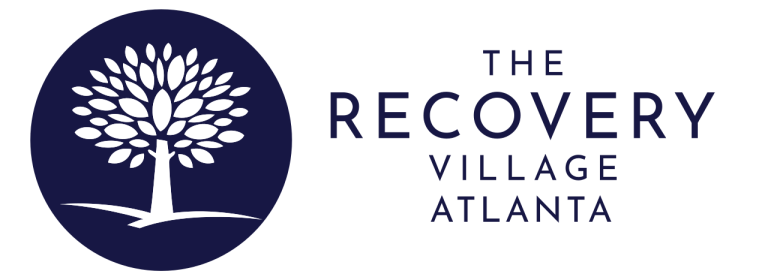Stimulants are helpful for treating conditions like ADHD, but they also carry the risk of abuse and addiction. Fortunately, stimulant addiction treatment is available.
Stimulants are a common class of medications used to treat attention-deficit hyperactivity disorder (ADHD) and several other conditions. Millions of people benefit from stimulants when taken as prescribed. However, stimulants can also be addictive and can lead to abuse and dependence. If you or a loved one takes a stimulant, it is important to know what to do if there are signs of addiction.
What Are Stimulants?
Stimulants are drugs that speed up both the brain and body. They work by raising the level of brain neurotransmitters such as norepinephrine and dopamine. Norepinephrine, also known as noradrenaline, triggers the body’s fight-or-flight system. Meanwhile, dopamine activates the brain’s reward pathway. This means that stimulants can be very addictive, and many are classified as Schedule II controlled substances that carry a high risk of abuse, addiction and dependence.
Types of Stimulants
There are many different kinds of stimulant medications. While many are used to treat ADHD, others are prescribed to treat conditions like shift-work disorder or narcolepsy. Common stimulants include:
- Armodafinil (Nuvigil)
- Cocaine
- Dexmethylphenidate (Focalin)
- Dextroamphetamine and Amphetamine (Adderall)
- Khat
- Lisdexamfetamine (Vyvanse)
- Methamphetamine
- Modafinil (Provigil)
- Pitolisant (Wakix)
How Do Stimulants Work?
Stimulants increase the amount and production of dopamine and norepinephrine in the brain. Dopamine activates the brain’s reward circuit, while norepinephrine triggers the body’s fight-or-flight response.
New Year. Real Recovery.
The pressures of the season are real. Find lasting peace and expert support.

Stimulants are often prescribed to treat conditions like ADHD or narcolepsy. In these cases, the combination of increased norepinephrine and dopamine can help to treat the person’s condition. For example, ADHD is characterized by low dopamine function, so taking a stimulant that increases the amount of dopamine can help address this deficiency and resolve symptoms.
Common Stimulant Addictions
Stimulant abuse is very common. In 2020 alone, about 10.3 million Americans misused a stimulant, and adults aged 18 to 25 were most at risk. Of these:
- Cocaine was misused by about 3.3 million people. Cocaine is often abused by snorting or smoking, but it can also be injected.
- Prescription stimulants were misused by around 3.3 million people. Prescription stimulants like Adderall and Vyvanse are often taken by mouth, but they can also be crushed and injected.
- Methamphetamine was misused by about 1.5 million people. Methamphetamine is often taken by mouth, injected, snorted or smoked.
- More than one type of stimulant was misused by approximately 1.5 million people.
Signs of Stimulant Abuse
Stimulants can cause a variety of common side effects, especially when abused or taken in excessive doses. Being aware of these side effects can help you recognize if a loved one may be starting to struggle with a stimulant addiction. These side effects include:
- Dizziness
- Tremors
- Headache
- Flushed skin
- Chest pain
- Palpitations
- Sweating
- Vomiting
- Stomach cramps
- Agitation
- Hostility
- Aggression
- Panic
- Psychosis
Stimulant Withdrawal and Detox
The stimulant withdrawal process can involve several different stages. However, this varies depending on the person, the stimulant and the degree of stimulant abuse. A typical withdrawal sequence will include:
- Crash: Following a bout of intense use, many short-acting stimulants cause a crash, which is a period of prolonged fatigue and sleep. However, it is unclear if long-acting stimulants lead to a crash in the same way that shorter-acting stimulants do.
- Comedown: During a crash, a person often experiences a comedown, which is a period of exhaustion and mood changes.
- Withdrawal: Withdrawal often begins within several days of stopping stimulants. Most withdrawal symptoms will end within two weeks. However, some people may continue to have symptoms, especially if they abused stimulants over a long period of time.
Stimulant withdrawal symptoms include:
- Depression
- Agitation
- Changes in sleep habits
- Vivid or bad dreams
- Increased appetite
- Mental slowing
- Fatigue
- Physical problems
Chronically high doses of stimulants can increase the risk of more dangerous withdrawal symptoms, such as:
- Psychosis
- Paranoia
- Disordered thoughts
- Hallucinations
These severe withdrawal symptoms can make a person dangerous to themselves or others. For this reason, medically supervised detox is the safest way to quit stimulants if you have been taking a high dose for a long time.
Stimulant Addiction Treatment
Ending stimulant use can be difficult to do on your own, but having medical support during the detox process can help. While in medical detox, medications can be used to treat withdrawal symptoms as they occur. For example, mood medications may be used to combat agitation, while sleep aids can promote more restful sleep.
Following medical detox, the work of rehab begins. In rehab, you undergo therapy to explore why you begin to rely on stimulants and begin to learn new strategies for living a stimulant-free life in recovery.
Get Help Today
If you or someone you love is struggling with stimulant abuse and addiction, you are not alone. The Recovery Village Atlanta is here to help you address your stimulant addiction and begin a healthier, substance-free future in recovery. Contact our experts today to learn about stimulant addiction treatment programs that can work well for your situation.




